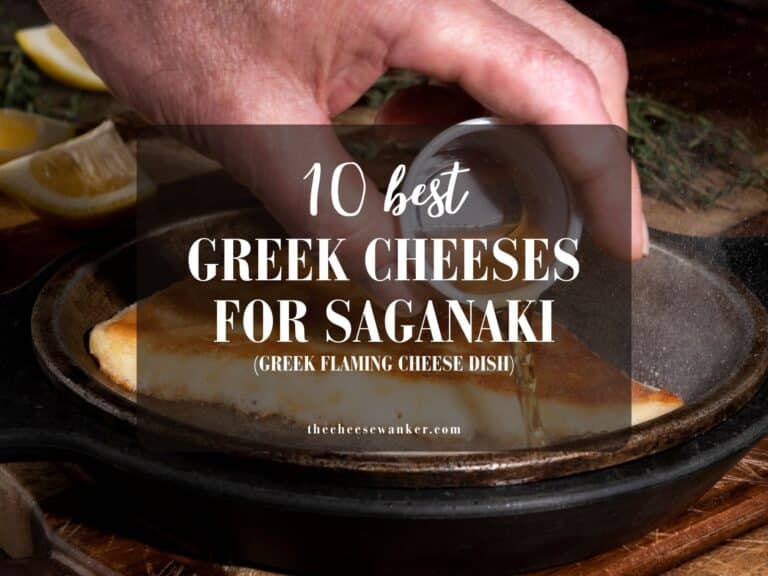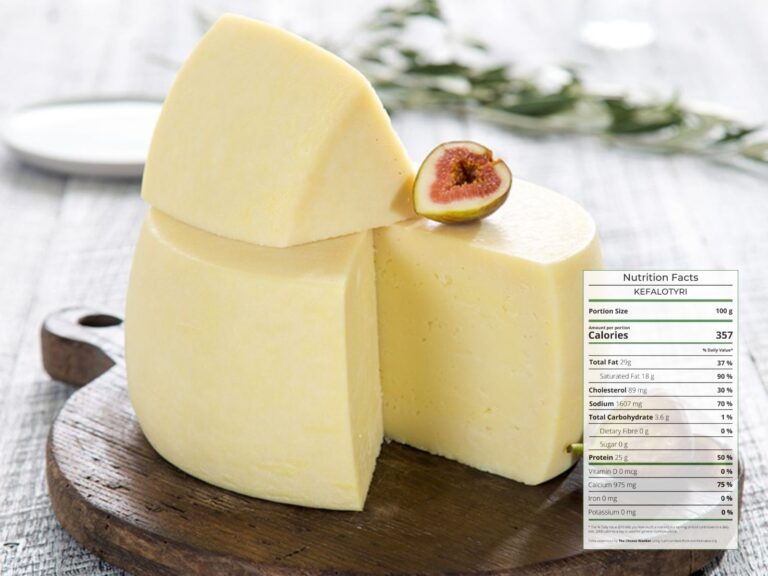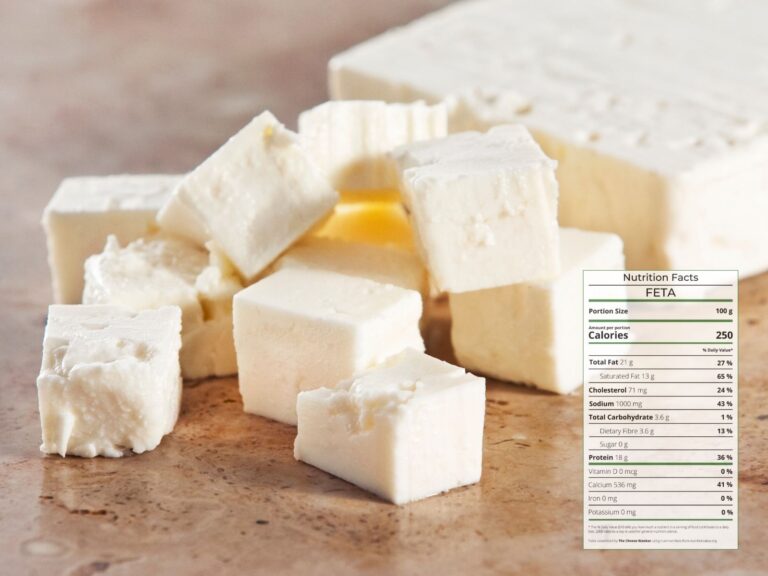The history of cheesemaking goes back further in Greece than in most countries. And, to this day, cheese is part of everyday life and plays an important role in Greek cuisine. Read on to discover the 21 Greek PDO cheeses. We’ll cover the history of each cheese, what they taste like and how best to enjoy them.
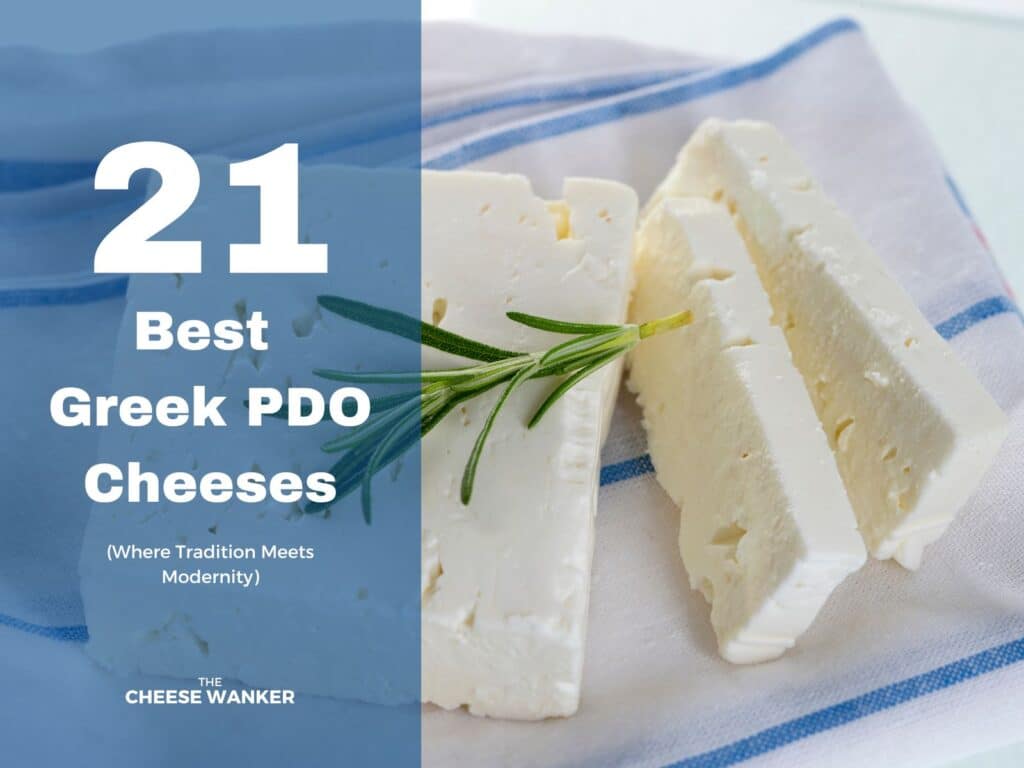
History of cheese in Greece
Greece, a land rich in history and culture, has a longstanding tradition of cheesemaking that dates back thousands of years. The art of crafting and consuming cheese in Greece is a testament to the country’s deep-rooted agricultural heritage and culinary excellence.
From ancient times to the present day, cheese has played a vital role in Greek cuisine, serving as a staple ingredient and symbol of hospitality.
The history of cheesemaking in Greece can be traced to ancient civilisations, including the Minoans and Mycenaeans, who inhabited the region around 2000 BCE. These early communities were skilled in the practices of animal husbandry and agriculture, laying the groundwork for the development of various dairy products, including cheese.
Over time, the techniques and methods of cheesemaking evolved, influenced by trade, cultural exchanges, and the diverse landscapes of the Greek peninsula and its islands.
Protected Greek cheeses
In modern times, Greek cheesemaking continues to thrive, blending traditional methods with contemporary innovation.
Protected Designation of Origin (PDO) and Protected Geographical Indication (PGI) certifications help preserve the authenticity of Greek cheeses, ensuring that they are made according to time-honoured practices and using locally sourced ingredients.
Without further ado, let’s have a look at Greece’s 21 PDO cheeses.
1. Graviera Naxou (Γραβιέρα Νάξου)
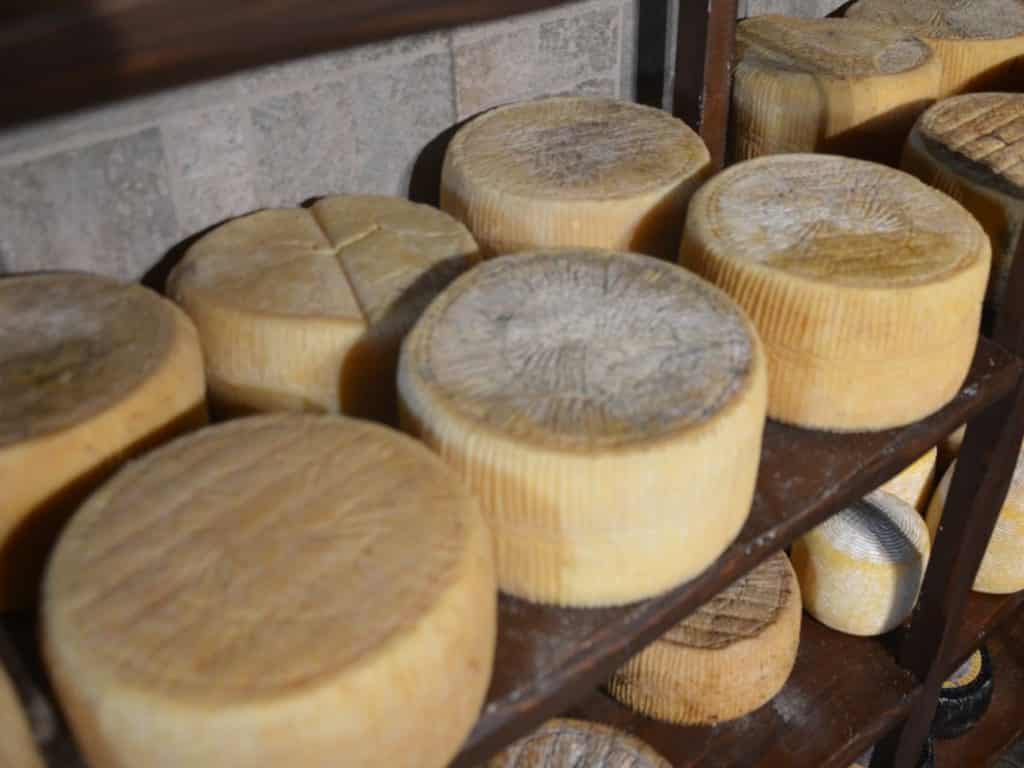
Let’s start our exploration of Greek cheeses in the picturesque island of Naxos in the Cyclades. Graviera Naxou is a hard cheese that is made with pasteurised cow’s milk and a small percentage of either goat’s or sheep’s milk.
At 90 days, Graviera Naxou develops a beautiful cream-coloured natural rind and a dense yellow paste with small openings. You can expect a sweet, rich taste with notes of walnut and almond.
As a result of its complexity, Graviera Naxou is a great table cheese. It can be sliced and served as an appetiser, fried and eaten as a snack, or grated over pasta.
2. San Michali (Σαν Μιχάλη)
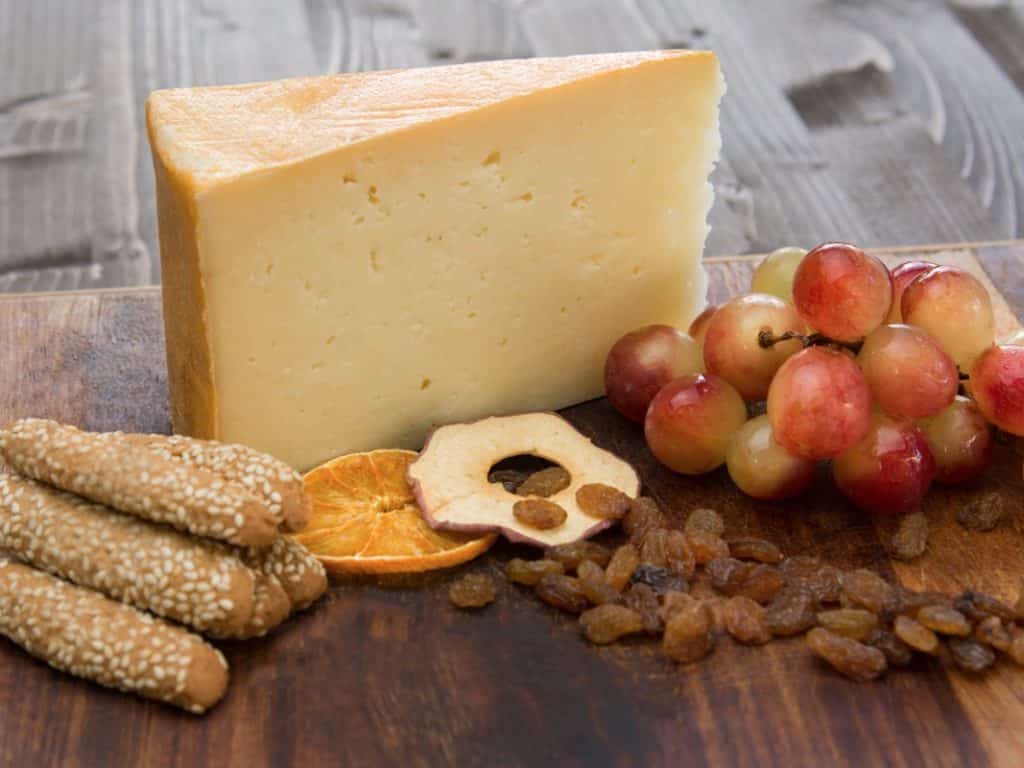
Next, we have San Michali which is another cow’s milk cheese. San Michali hails from a small village on the island of Syros aptly called San Michalis. San Michali is a hard cheese with a dense ivory-coloured paste and a natural rind.
Due to its appearance and texture, the locals refer to San Michali as the Parmesan of Syros.
Moreover, the cheese has a pleasant aroma that is reminiscent of hazelnuts. And a buttery and savoury flavour with a hint of spice. Unsurprisingly, this cheese is good enough to be served on a cheese platter. However, the locals love to cook with it in recipes such as omelettes, soufflés and casseroles.
3. Metsovone (Μετσοβόνε)
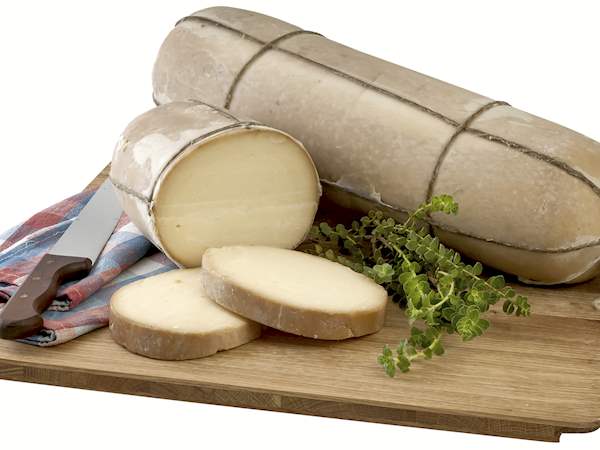
We continue our exploration of cow’s milk cheeses with Metsovone. This semi-hard, naturally smoked cheese finds its roots in the region of Metsovo in Epirus. Unlike our first two cheeses, Metsovone is a pasta filata style cheese that bears some similarities with Provolone.
However, it does differ in one major way. Because it is naturally smoked during maturation, the cheese develops a certain smoky quality. Metsovone is a good table cheese but truly excels when melted on a butterflied steak, mushrooms or potatoes. Also, it pairs beautifully with a glass of a local red wine.
4. Graviera Agrafon (Γραβιέρα Αγράφων)
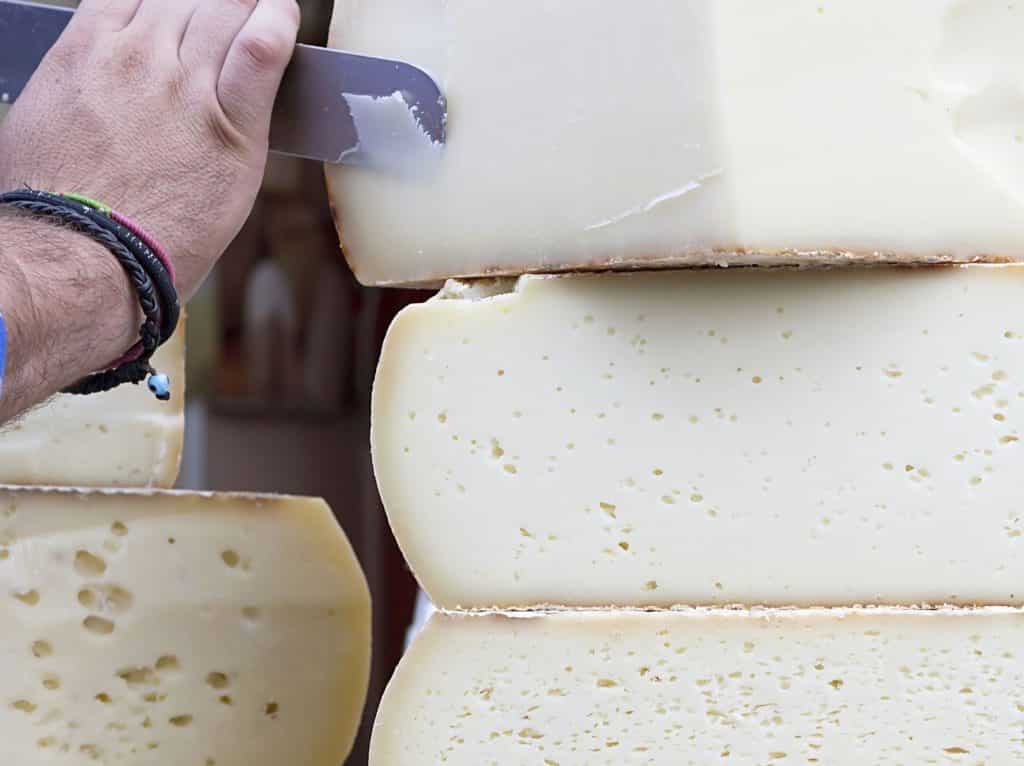
This particular type of Graviera originates from the Agrafa mountains in Western Thessaly and Evritania. Unlike Graviera Naxou, Graviera Agrafon is made with either sheep’s milk or a combination with goat’s milk (not more than 30%).
At six months, Graviera Agrafon has a compact straw-coloured paste that is full of small round eyes. Its aroma is rich and grassy and its flavour is a touch spicy and goaty. Overall, Graviera Agrafon excels as a sliced table cheese. Due to its stronger flavour, it pairs well with equally robust and tannic red wines.
5. Anevato (Ανεβατό)
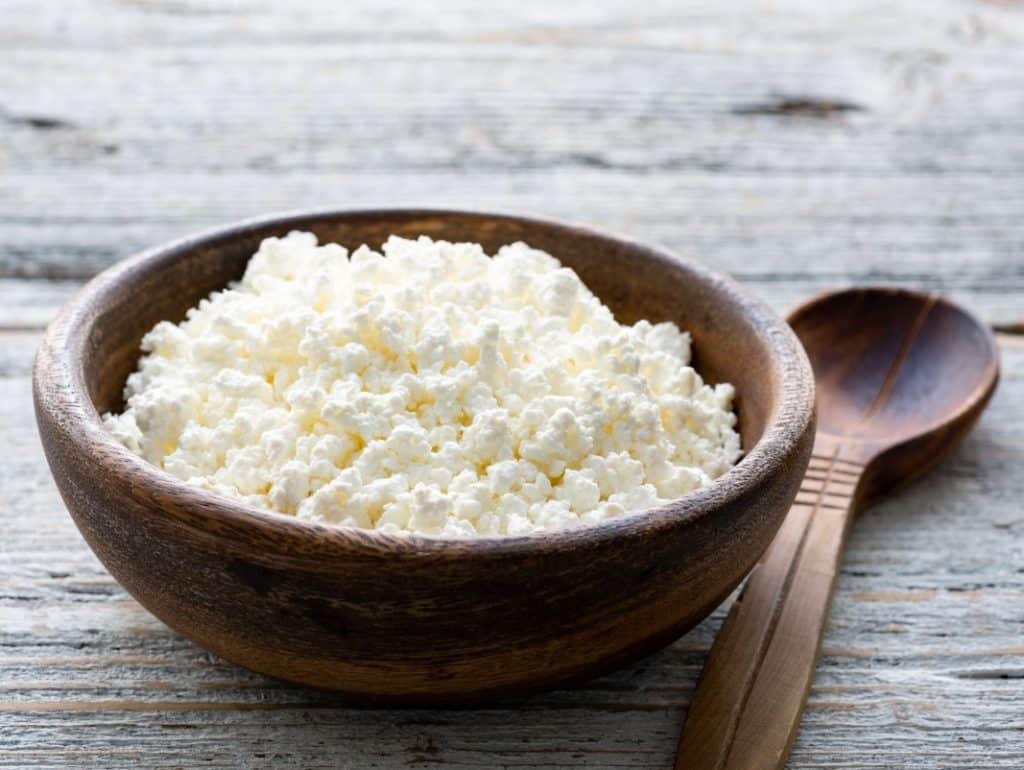
Our fifth Greek cheese is a bit of an anomaly on this list. Indeed, Anevato is the only Greek PDO cheese than can be made with 100% goat’s milk. This unique cheese originated from Western Macedonia where it has been made by local shepherds for generations.
At two months, Anevato has a pristine white colour, with the occasional tinge of pink. Its texture is soft and grainy and its flavour is acidic and fresh. Due to its creamy texture, it is a very popular addition to salad and savoury pastries.
Also, the locals often spread Anevato on toast or crackers. This young cheese pairs spectacularly with local wines such as Mavrodafni and Moschato.
6. Kasseri (Κασέρι)
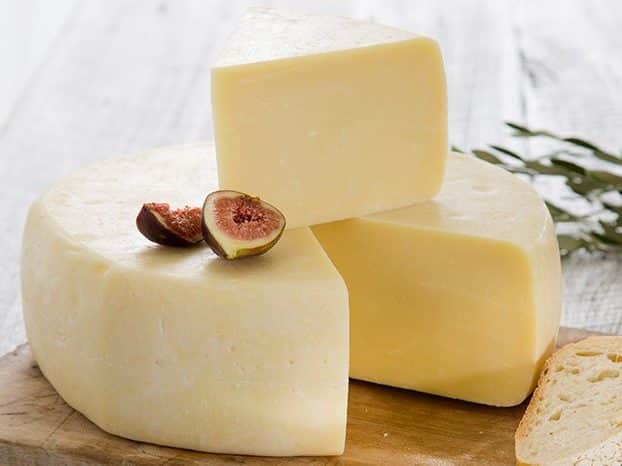
Next, we have another sheep’s milk cheese that sometimes contains small amounts of goat’s milk and cow’s milk. Kasseri is a semi-hard cheese produced four specific regions of Greece: the island of Lesbos, Thessaly, Macedonia, and Xanthi in Thrace.
Kasseri is rindless and has a semi-hard texture. Its taste is buttery and sweet. As it matures further, its flavour profile gradually becomes more savoury. At room temperature, Kasseri is an excellent addition to sandwiches and omelettes.
Because it melts beautifully, it is also often used in baked dishes including pizza. We recommend washing it all down with a full-bodied red wine.
7. Graviera Kritis (Γραβιέρα Κρήτης)
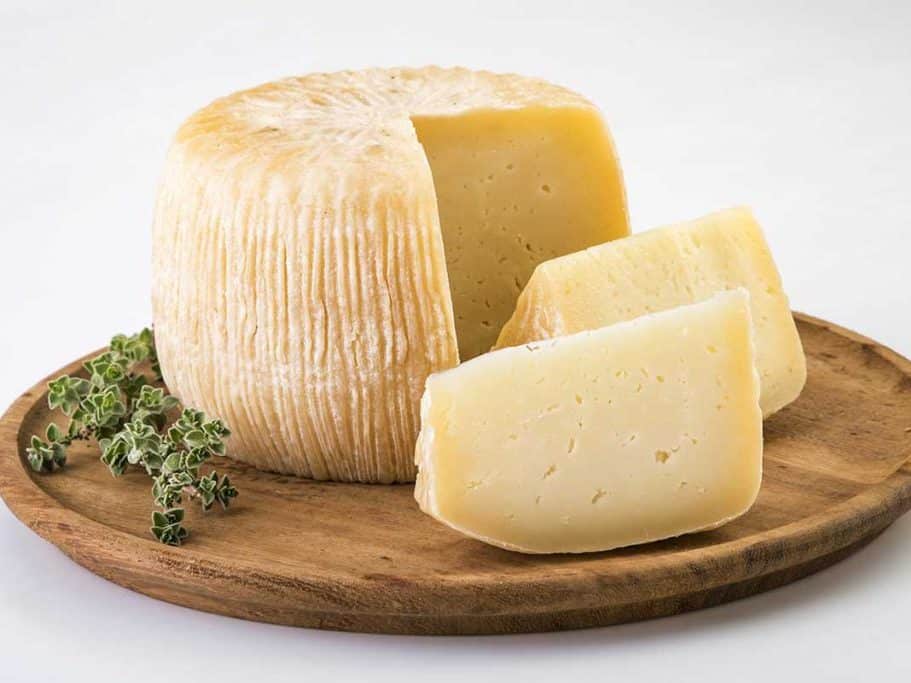
The final Graviera cheese on our list comes from Crete. As is often the case in Greece, Graviera Kritis is made mostly using sheep’s milk combined with goat’s milk (up to 20%). The animals that produce the milk for Graviera Kritis cheese must be allowed to graze freely in the mountainous and semi-mountainous areas of Crete, where the cheese is made.
After maturing for up to five months, Graviera Kritis develops a hard light-yellow paste surrounded by a natural rind. Overall, its flavour is nutty and sweet, with a subtle savoury aftertaste.
Locals often serve Graviera Kritis cheese as an appetiser or grated into soups and salads. Furthermore, it pairs particularly well with fruits including pear, apple, and grapes.
8. Feta (Φέτα)
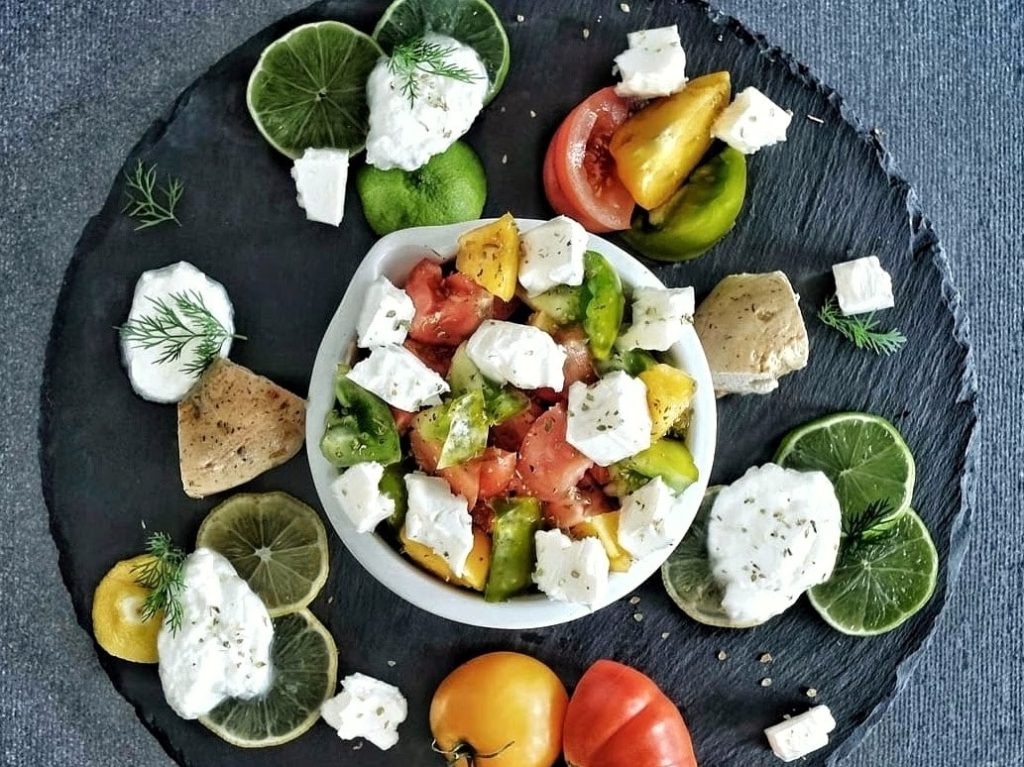
Undoubtedly, Feta is Greece’s most popular and famous cheese. Indeed, its history goes back a few thousand years and it first appeared in Homer’s Odyssey. Since 2002, Feta has carried a PDO status which exclusively reserves the use of the name to cheeses that are made in Greece.
Traditionally, Feta producers have used a mixture of sheep’s and goat’s milk (60/40%) and aged their cheese in barrels filled with brine.
You can walk into any Greek kitchen and expect to find some Feta. Indeed, they use this versatile cheese in a number of different ways. Feta can be served as an appetiser, side dish or even as an ingredient in salads and pastries.
9. Kalathaki Limnou (Καλαθάκι Λήμνου)
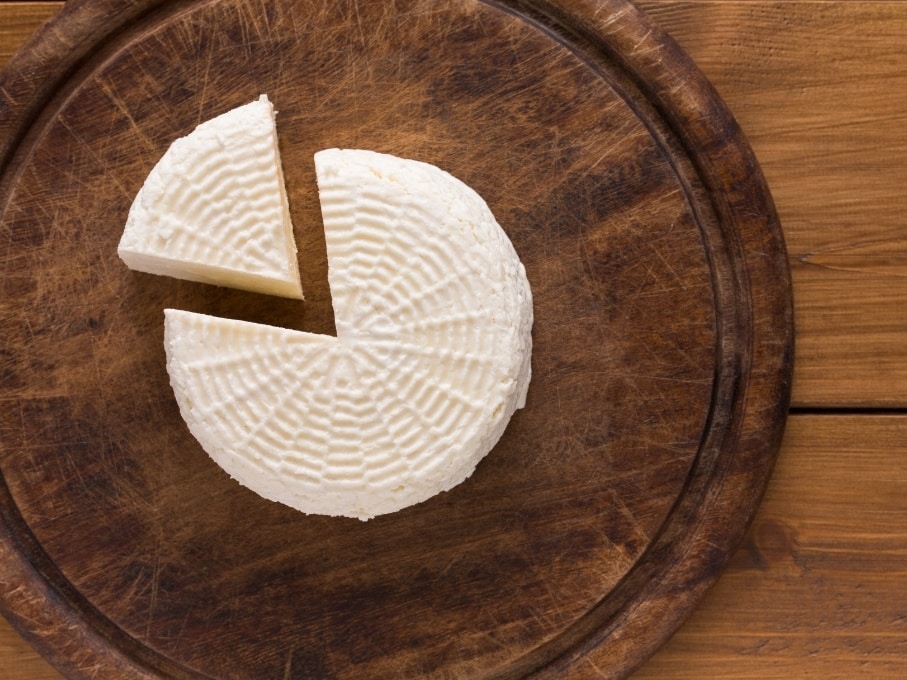
Kalathaki Limnou is a soft and white cheese that comes from Lemnos, Greece in the northern Aegean Sea. It is a brine cheese made from sheep’s milk or a combination of sheep’s milk and goat’s milk. If using goat’s milk, the PDO mandates that the amount cannot exceed 30% of the total milk.
Actually, the texture of Kalathaki Limnou is very similar to Feta. However, this particular cheese has a milder flavour which can be described as salty and slightly acidic. Locals in Lemnos often enjoy this delicate cheese on a cheese platter with stone fruit.
In addition to this, they often use Kalathaki in salads and pastries such as Spanakopita.
10. Formaela Arachovas Parnassou (Φορμαέλλα Αράχωβας Παρνασσού)
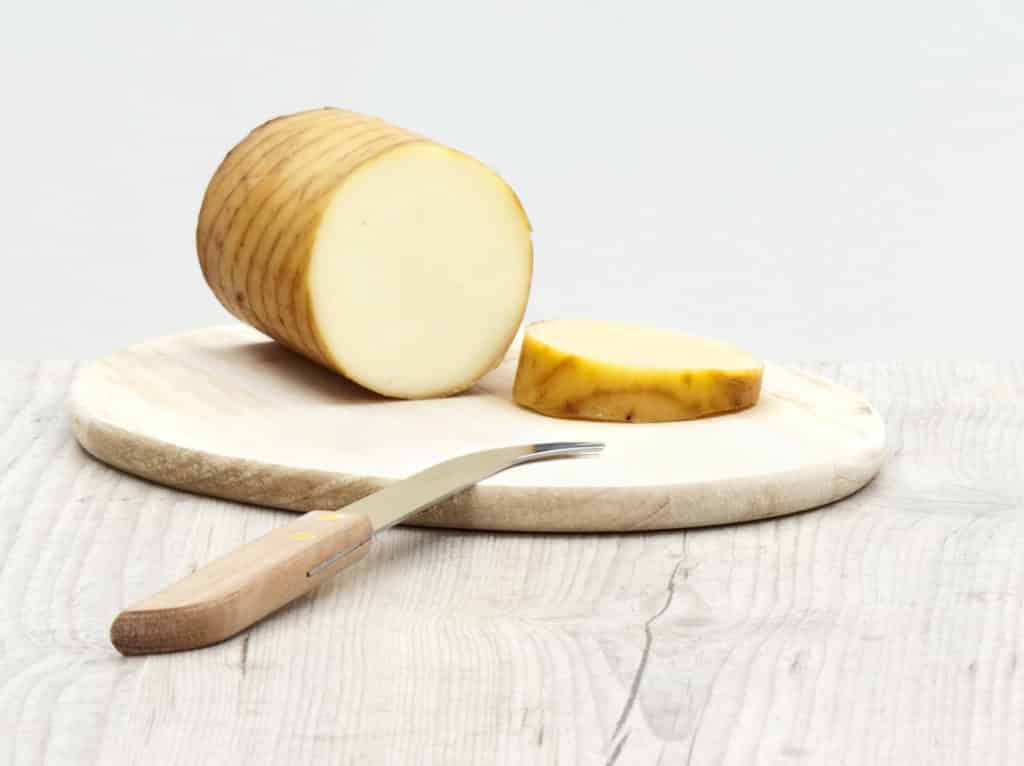
We’re almost halfway through our list of Greek PDO cheeses and this one is definitely a mouthful! Formaela Arachovas Parnassou is a sheep’s and goat’s milk cheese that is produced exclusively in Arachova. The milk used to make this cheese comes exclusively from animals that graze freely in mountainous regions.
This PDO cheese has a firm light-yellow texture with no eyes. Overall, its flavour is slightly savoury and milky with a touch of spice. Formaela Arachovas Parnassou is one of the best cheeses for Saganaki. Once you have fried the cheese, serve it with fresh lemon juice to contrast with the oiliness. As for wine pairings, this cheese will go well with an acidic white wine.
11. Kefalograviera (Κεφαλογραβιέρα)
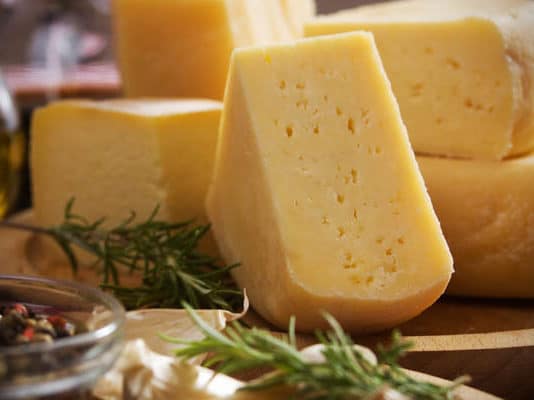
Kefalograviera is a hard Greek cheese that is made from 100% sheep’s milk or a mixture of sheep and goat’s milk. Presently, Kefalograviera is produced in the mountains of Western Macedonia and Epirus and aged for 3 months or longer. Also, as you’ve probably guessed from its name, Kefalograviera is a combination of two popular Greek cheeses: Kefalotyri and Graviera.
As a matter of fact, it brings together the piquant quality in Kefalotyri and the mellowness of Graviera. The end result is a complex cheese with a savoury flavour and rich aroma. Unsurprisingly, Kefalograviera is a hugely popular cheese for Saganaki. On top of this, the Greeks like to use it in pasta dishes and on meze platters.
Finally, it pairs really well with full-bodied red wines, ouzo and some local white wines.
12. Kopanisti (Κοπανιστή)
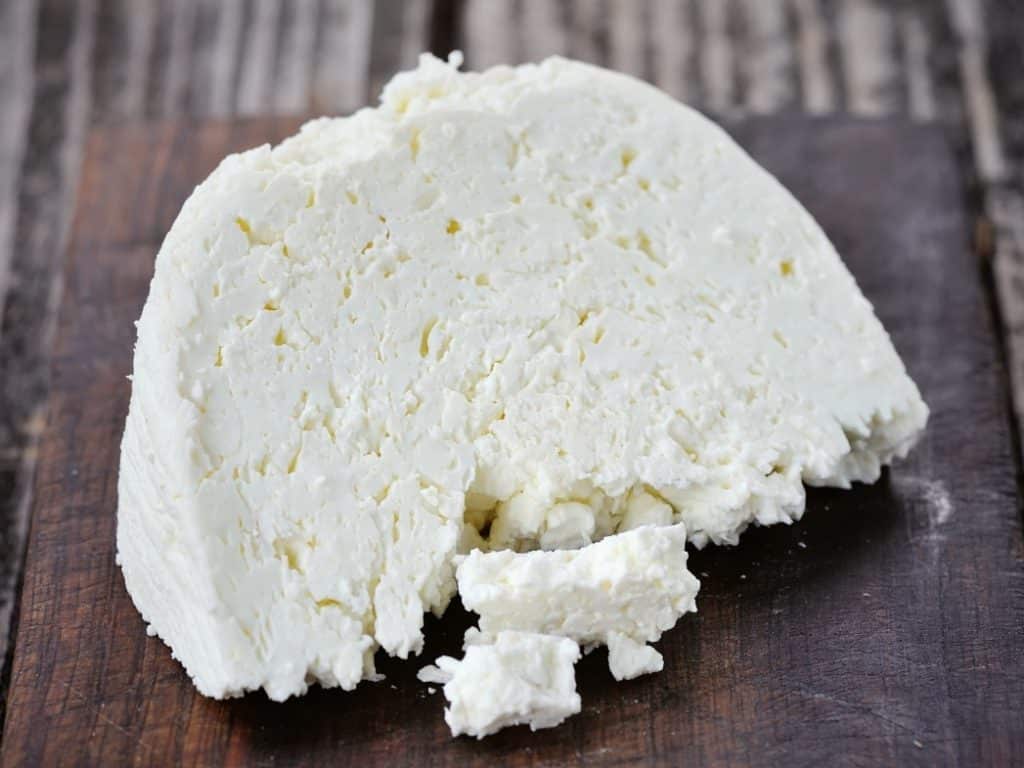
As its name indicates, Kopanisti Mykonou comes from the Cyclades islands of Mykonos, Syros and Tinos. In a similar manner to most of the cheeses we’ve mentioned so far, Kopanisti can be made from sheep’s milk, goat’s milk or a combination of the two.
During production, the milk choice and ratio plays a significant role in the final flavour of the cheese. Indeed, it can range from sweet to sour with a buttery and soft texture. This soft spreadable cheese is very popular in salads, sweet desserts and pies.
13. Manouri (Μανούρι)
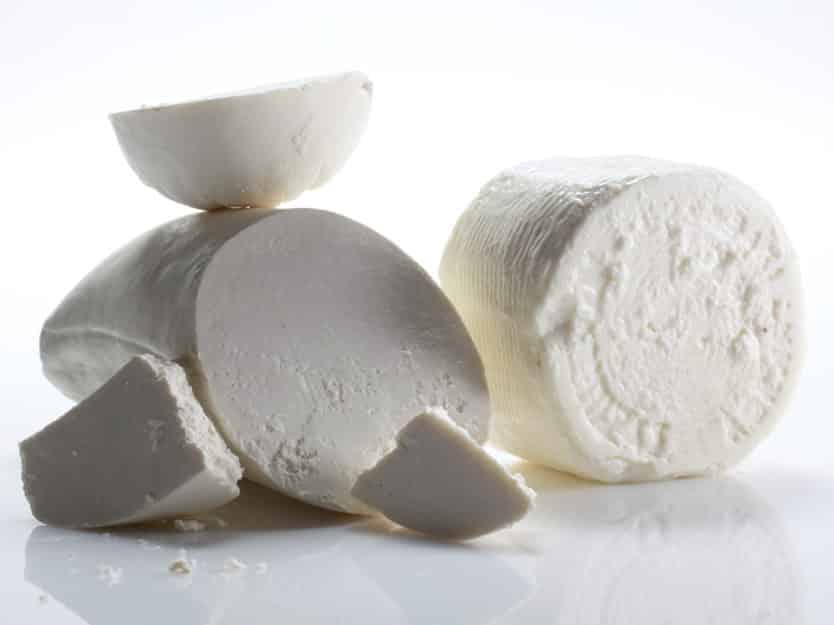
Manouri is a semi-soft white cheese that originates from Western and Central Macedonia and Thessaly. Unlike all of the cheeses we’ve listed so far, Manouri is actually made with sheep’s or goat’s whey that has been drained when making Feta.
As a result of this, its flavour is quite similar for Greece’s most famous cheese. However, its texture tends to be a bit creamier.
On the palate, Manouri exhibits a less salty flavour profile than Feta with pleasant notes of citrus. Locals like to use it in pastry dishes such as Spanakopita and can replace cream cheese in a cheesecake. Having said that, this cheese is good enough to be served as a table cheese with a drizzle of honey.
14. Xynomizithra Kritis (Ξυνομυζήθρα Κρήτης)
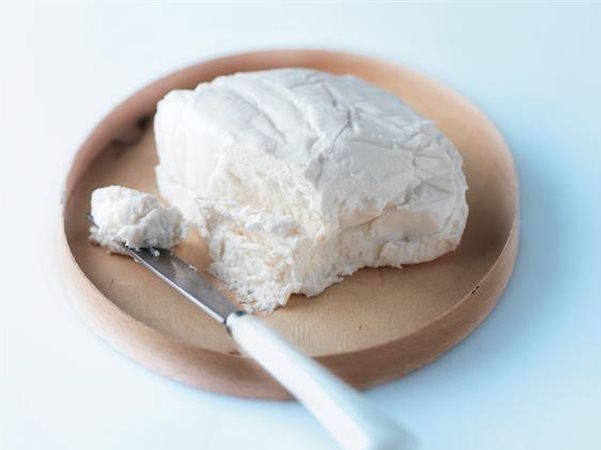
Just like Manouri, Xynomizithra Kritis is made from a mixture of whey and sheep’s and goat’s milk. Production of this sour version of Mizithra (a Ricotta-like whey cheese) takes place mostly in Crete in the prefectures of Lasithi, Heraklion, Chania, and Rethymno.
It has a pristine white colour and a soft and creamy mouthfeel. As its name indicates, this cheese’s flavour has a certain sour quality combined with sweet and savoury notes. Cretans enjoy eating this cheese spread on a local hard bread called Paximadi.
In addition to this, it is also a popular addition to fresh salads and cheese pies such as Kalitsounia.
15. Galotyri (Γαλοτύρι)
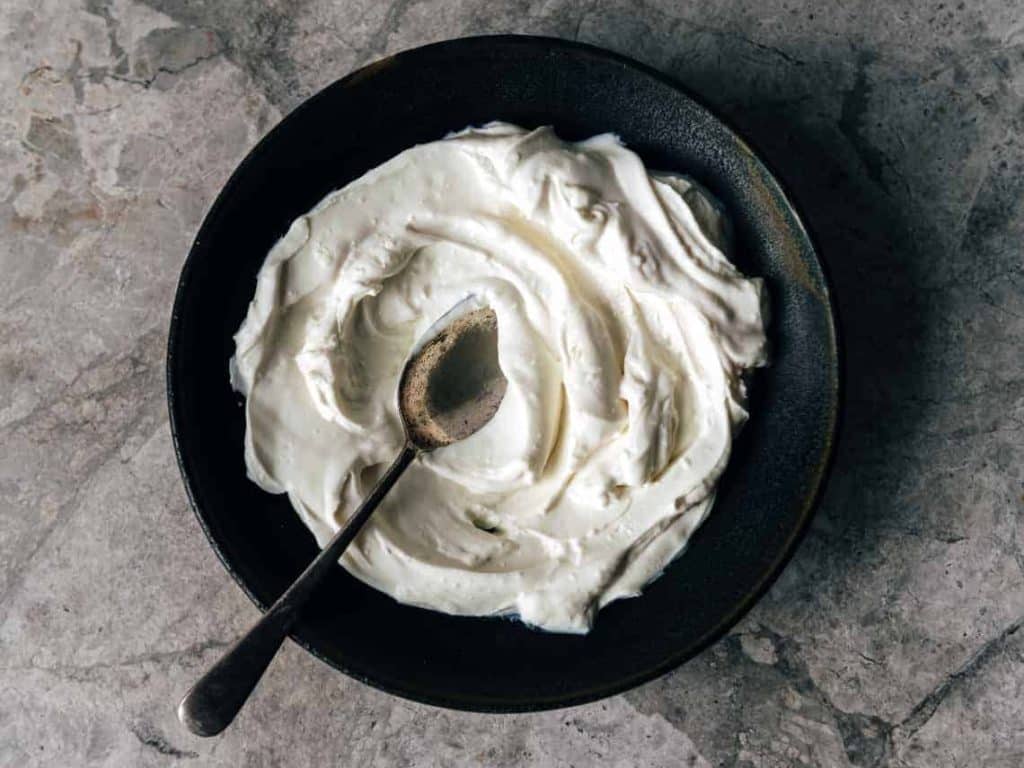
Along with Anevato, Galotyri is one of the most ancient Greek cheeses. Its name has the simplest of origins because galo means milk and tyri means cheese. Indeed, this “milk cheese” is traditionally made from goat’s milk, sheep’s milk or a mixture of both.
Moreover, it finds its roots in the Thessaly and Epirus regions.
The aroma of Galotyri and its taste are both slightly sour while also being herb-like. Due to its soft texture and high moisture content, Galotyri cheese is perfect for spreading on bread or crackers. Furthermore, it pairs well with alcoholic beverages such as raki and ouzo.
16. Katiki Domokou (Κατίκι Δομοκού)
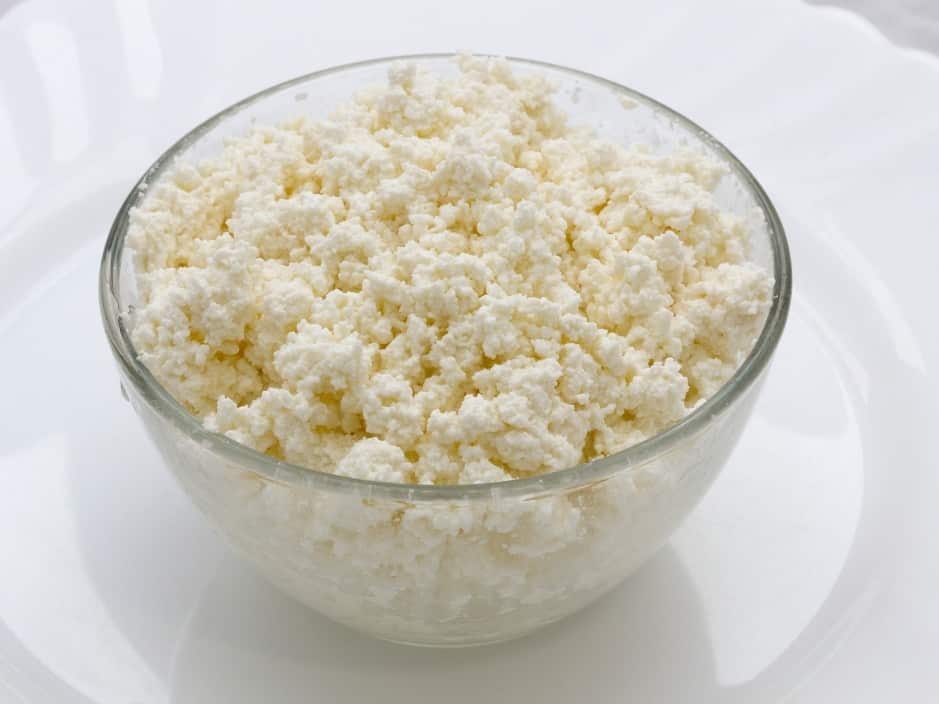
Next, we have yet another sheep and/or goat cheese. This particular one originates from the Orthis plateau in the region of Domokos. The PDO restricts the milk used to make Katiki Domokou to sheep and goats that are indigenous to Domokos.
With a moisture content of up to 75%, it is not surprising that Katiki Domokou is very soft and milky. As for the flavour, this cheese does show a little bit of sourness balanced with a rich and fatty quality. Locals like to enjoy Katiki spread on bread or crackers and it also makes a great dip for fruit.
17. Ladotyri Mytilinis (Λαδοτύρι Μυτιλήνης)
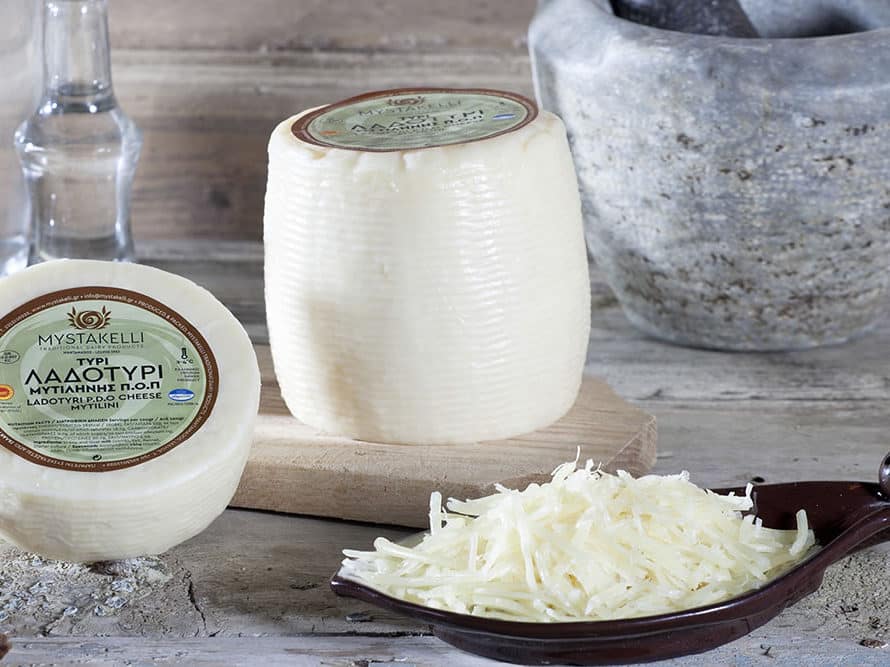
Ladotyri Mytilinis is a hard Greek cheese that comes from the island of Lesbos. As is often the case in Greece, this cheese is made using a combination of sheep’s and goat’s (up to 30%) milk. The cheese derives its name from two Greek words that translate to “oil cheese”.
Ladotyri Mytilinis has a signature cylindrical shape and a pale-yellow colour. Its aroma is reminiscent of a barnyard and its flavour savoury and slightly spicy. Islanders like to enjoy this local cheese with salad and baked dishes such as soufflé. Also, it pairs well with light fruity wines and ouzo.
18. Batzos (Μπάτζος)
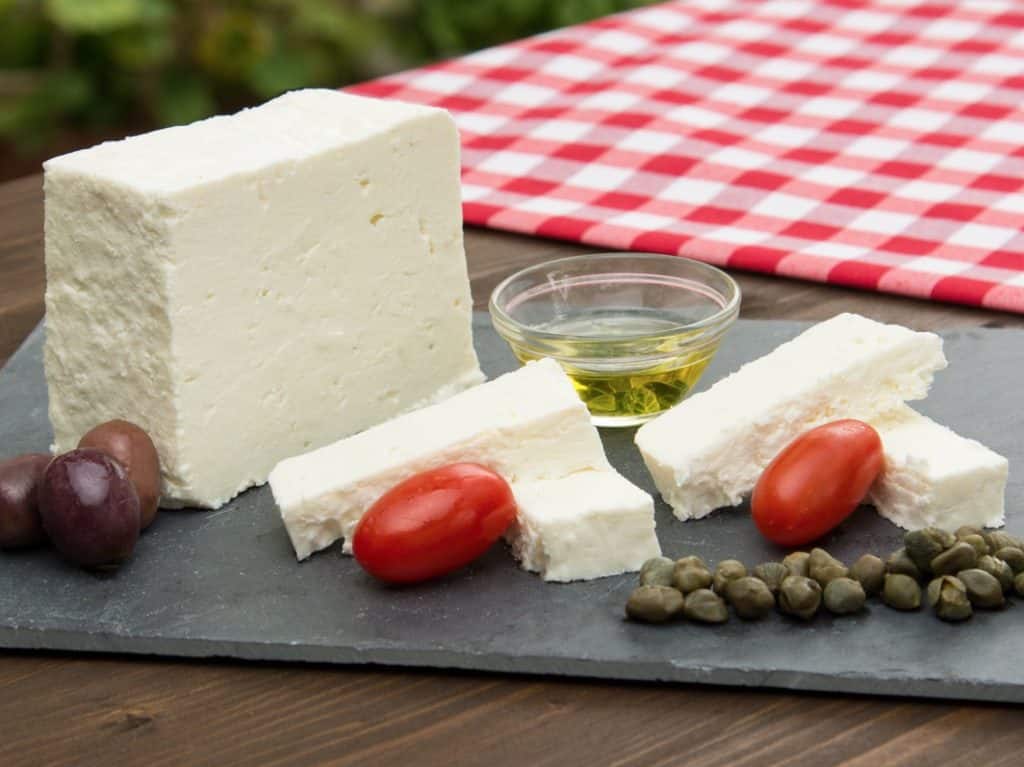
Number 18 one our Greek PDO cheese list is a semi-hard to hard cheese called Batzos. This sheep’s and goat’s milk cheese gets its name from the Vlach word batzos which means mountain huts.
Batzos has an iconic square shape and is rindless with a spattering of small eyes. Its colour varies from white to light-yellow and it has a surprisingly low fat content at around 20%.
The flavour and texture of Batzos make it ideal for Saganaki. In Macedonia, the locals enjoy it dipped in Makalo, a gravy made with fat, flour and water. Also, Batzos is a great table cheese and can be grated on pizzas and other baked dishes.
19. Pichtogalo Chanion (Πηχτόγαλο Χανίων)
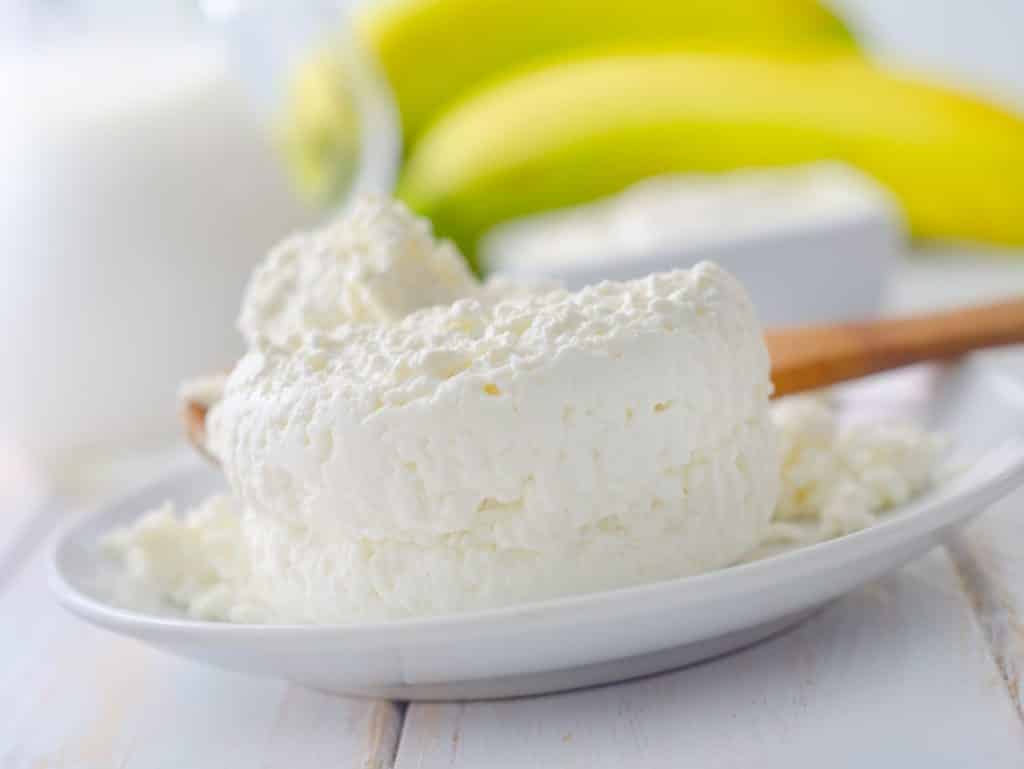
Pichtogalo Chanion is a fresh sheep’s and goat’s milk cheese that originates from the Chania prefecture on the island of Crete. To this day, locals make this cheese using unpasteurised milk and traditional methods.
Pichtogalo Chanion is rindless and has a savoury and slightly sour taste with a milk finish. Actually, its aroma is reminiscent of Greek yoghurt. Due to its high moisture content, it is often spread on bread and crackers.
In Chania, the locals use Pichtogalo Chanion in breakfast pastries called Bougatsa. Moreover, the cheese pairs well with a local wine, raki or ouzo.
20. Sfela (Σφέλα)
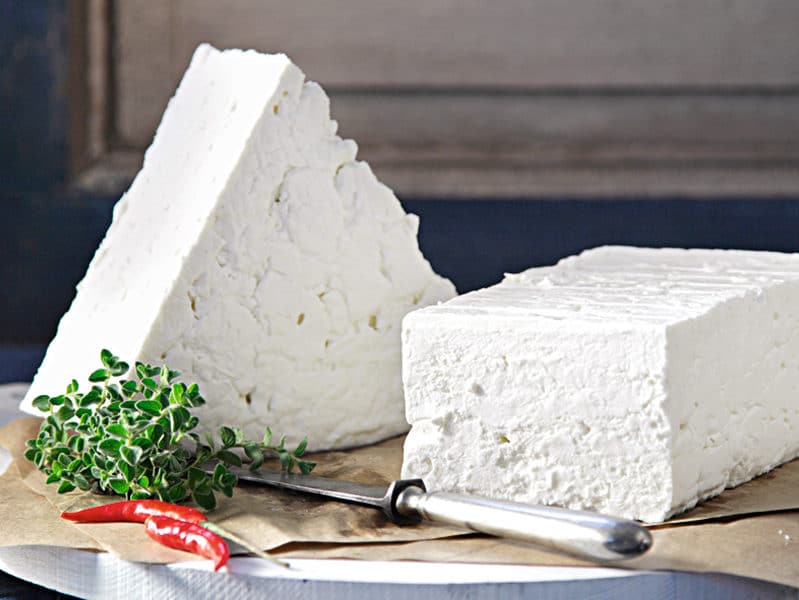
At number 20, we’ve got a cheese that is very similar to Feta. Sfela is a semi-hard off-white cheese that is made from a combination of sheep’s and goat’s milk. It finds its roots in the Lakonia and Messinia prefectures of southern Peloponnese.
Sfela is hugely popular in modern Greek cooking. It is a delightful grilled appetiser and pairs wonderfully with meat and vegetables. Moreover, it can be enjoyed with a mixture of olive oil and oregano. Hence, it is a popular addition to Greek salads. Finally, Sfela pairs really well with a local raki, ouzo or beer.
21. Xygalo Siteias (Ξύγαλο Σητείας/ Ξίγαλο Σητείας)
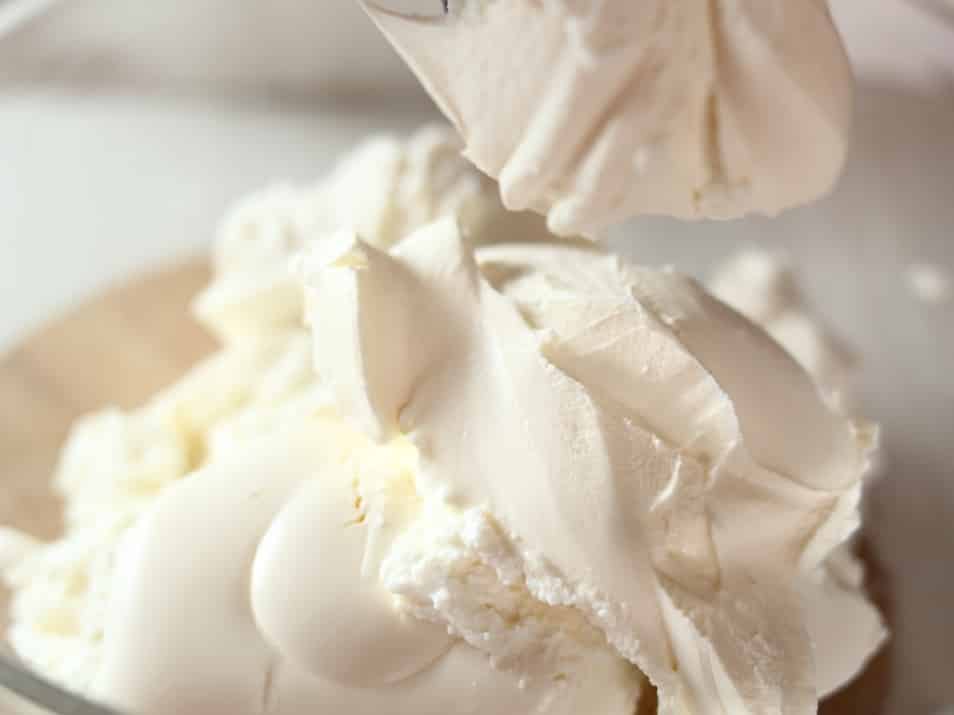
The final cheese on our Greek PDO cheese list is Xygalo Siteias. This wonderfully named cheese comes from the municipalities of Lefki, Itanos, Makry Yialos and Siteia on the island of Crete. Dating back some 50 years, Xygalo Siteias is mostly made with goat’s milk.
However, the local cheesemakers sometimes use sheep’s milk when goat’s milk is low in supply.
This white fresh cheese has a creamy to granular texture and a subtle acidic flavour. This spreadable cheese makes for a great appetiser on crunchy bread and is also a great addition to salads with an olive oil vinaigrette dressing. Because this is such a delicate cheese, you will struggle to find it beyond the shores of Crete.
A cheese production powerhouse
Thank you for reading our post on the 21 Greek PDO cheeses. As you can see, Greece is a cheese powerhouse when it comes to production and consumption. Indeed, cheese can very easily find its way into every meal in Greek cuisine.
However, because of how delicate and fresh some of those cheeses are, you will have to travel to the PDO regions to enjoy them. Time for a Greek holiday? Let me know in the comments what your favourite Greek cheeses are. And how you like to enjoy them.

